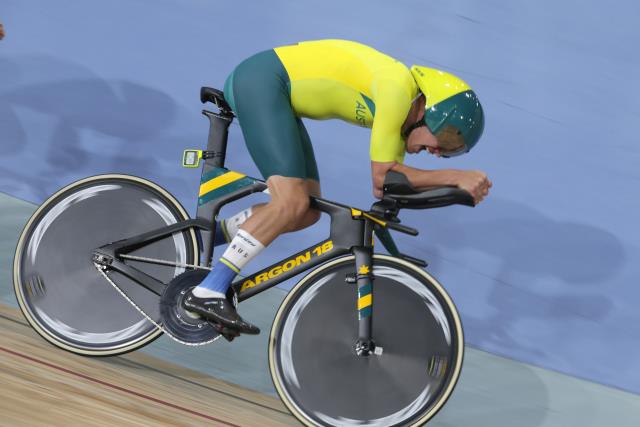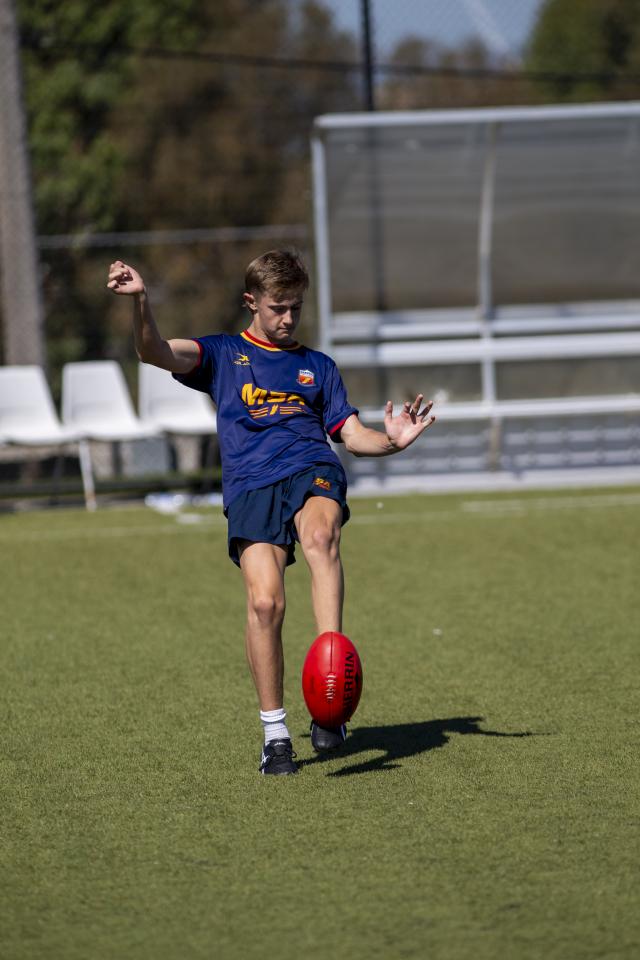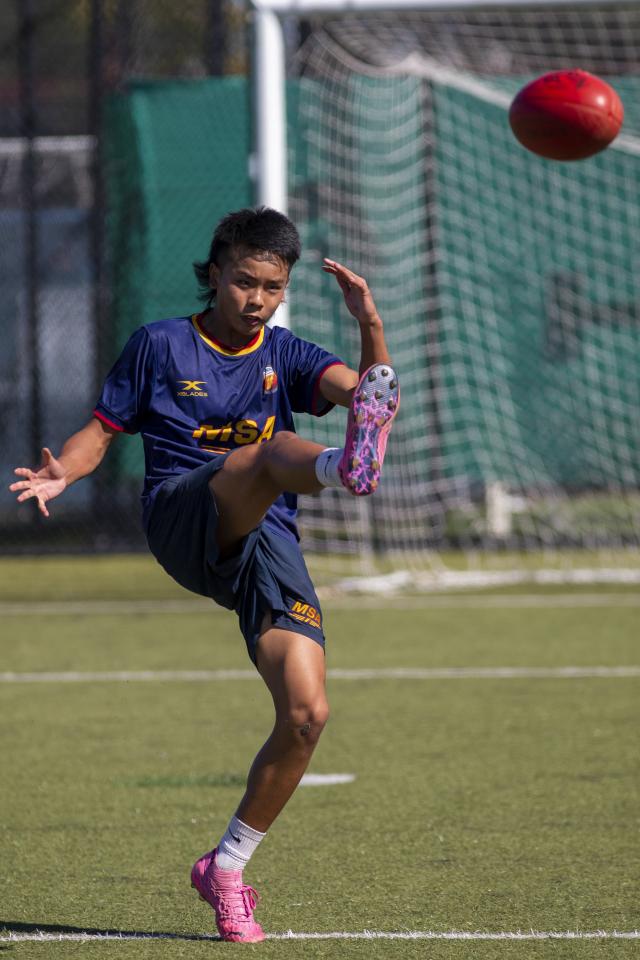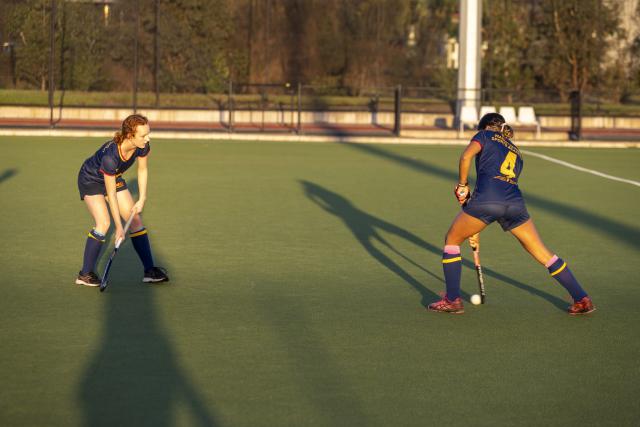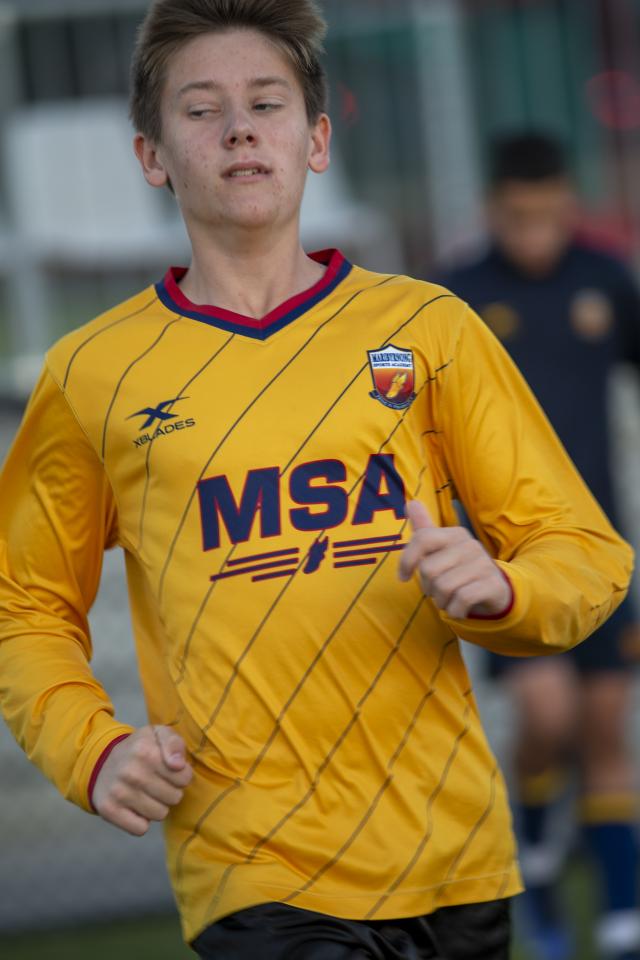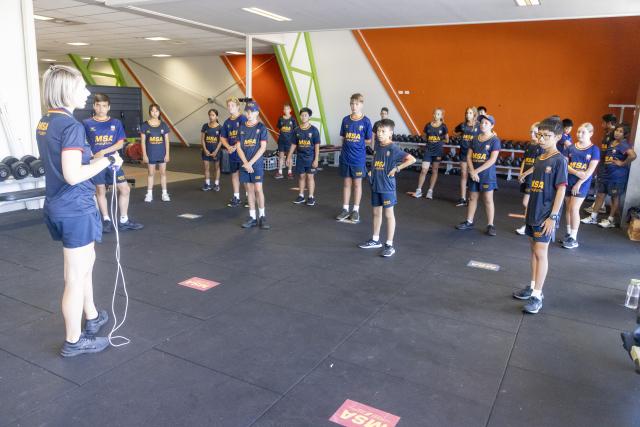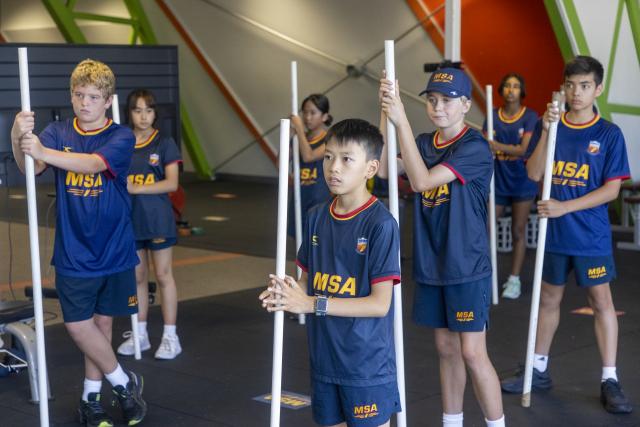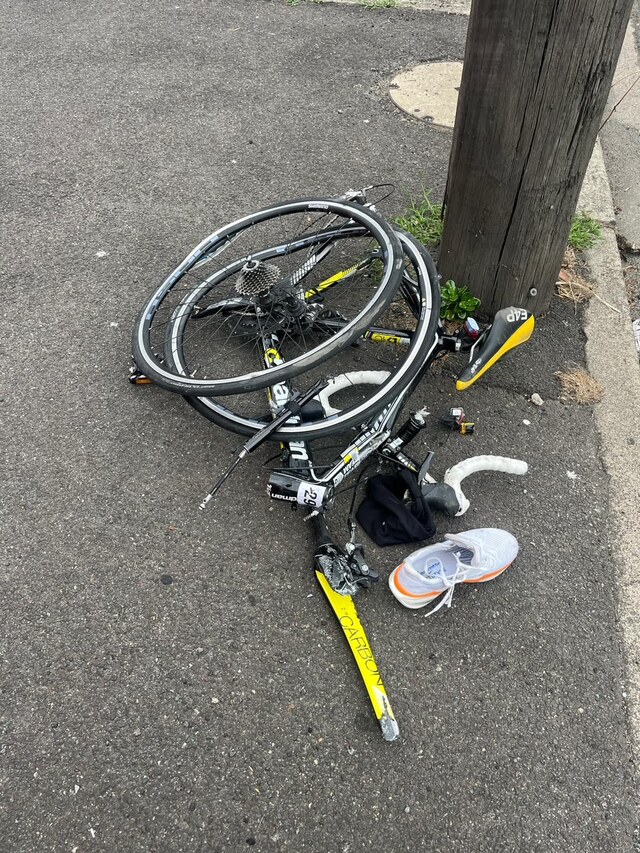Behind the walls at Maribyrnong Sports Academy there is a hive of activity as students start their sporting Students from across Melbourne’s north-west including Maribyrnong and Hobsons Bay are among those at the school. Tara Murray goes behind the walls of the school.
careers.
On this particular night, the school’s female football players were being put through their paces.
Many of them still new to the sport were learning kicking techniques and how to kick on their opposite foot.
In other locations around the school, coaches and their students were doing activities to help grow their games.
Head of the school’s AFL program Robbie Chancellor said the programs run within the academy are about giving students the best opportunity to succeed in their sporting dreams.
Having been part of the AFL system before, he has seen what works at the top level.
“It’s a massive head start for these guys,” said Chancellor as he was keeping his eye on his charges.
“Professionalism is nearly the biggest thing you get from this. It’s a holistic program, you’ve got sport psychs, dietitians and a fantastic high performance program to teach them how to prepare their bodies physically and how to recover.
“Combined as a program there isn’t much out there like this.”
The academy has come a long way since it started in 2007.
With enrolments struggling at Maribyrnong College it was decided to turn the school into a specialist school of some sort. It would become a sports academy.
Director Mark McAllion, sitting in his office which is filled with sports memorabilia from past students, said it had taken time for interest in the academy to grow.
“At the time the school was dying for a better term,” he said.
“School enrolments for the following year were really really low, so it was decided to be a specialist school of some description, then set it on sport.
“The first intake was 2007, but trying to attract kids into a specialist sports school with no facilities was actually quite hard.
“My predecessors would visit presentation nights, do club visits and all things trying to promote the place and build it up from there.
“There’s now 575 student athletes in the academy out of 1300 kids in the whole school.”
The program is funded by the state government and is the only school in Victoria that gets that funding.
There are 100 spots in each year level, with spots only opening up when students leave the school. As many as 400 students apply each year.
Students travel from as far as Craigieburn, Bundoora, Woodend, Werribee, while others relocate to live nearby.
McAllion said students are put through tests before they select who will come to the school.
“The kids go through some physical testing, some trials with the coaches,” he said.
“Then basically a list gets put together of the 100 kids with the most potential to become serious athletes down the track.
“It might mean we pick the little kids that haven’t developed yet, but the coaches and staff say they might have attributes that will be really good.”
Supporting the students are about 70 staff members ranging from coaches, teachers, rehabilitation, sports psychologists, physiotherapists.
Most of the coaches have backgrounds in coaching or playing at high levels themselves, with seven Olympians on staff.
“We have footy, athletics, cricket, badminton, basketball, golf hockey, netball, soccer, taekwondo, tennis, volleyball, baseball, judo that we actually provide coaching in that coaching happens before,” he said.
“If you’re in a sport we don’t offer coaching… They are what we call associate athletes, they still get the benefits of the program with coaching externally.
While the coaching happens outside hours, the sport component is a major part of the students daily study with the High Performance Preparation [HPP] program.
It’s timetabled into the students’ school calendar, with a varying number of classes depending on what year they are in.
The HPP isn’t just about performance, it’s about teaching them how to handle the whole sporting career.
Head of strength and conditioning Calvin Pane said while every student will complete similar programs, they individualise the programs as much as they can to best suit the students needs.
On this particular Wednesday, some of the older students are going through their paces. Some are squatting, some are doing strength work and others rehab.
“In year seven and eight and middle school it’s a bit more curriculum based and movement competency,” Pane said.
“If they’re squatting they’re learning how to squat, they’re learning how to set up. The safety features of it.
“It gets built out to a different movement over time and we load the exercise accordingly, as they get older.
“There’s literally a heap of exercises we work through all the year levels, we progress them out.
“Students who are in year 11 or such, have a little bit more structured stuff.
“They have some more personal development stuff. Taping techniques for an ankle or shoulder or they might do a first aid course, different things help them in the sport and potentially on the way out.”
The students also have education sessions regularly, while they have access to all the professionals they need.
There’s strength and conditioning coaches, athlete wellbeing coordinators, performance psychologists, dietitians, physios and rehab coordinators.
Pane said they wanted to set up the students for success if they make it to the higher level.
“We have tertiary trained staff with experience in elite environments or environments like here,” he said.
“We are prepping them for when they walk out to the Melbourne Vixens, Melbourne Demons or whoever it is..
“So when they go into that environment, there not being held back by their staff as they can’t
do a,b, c.”
The strength and conditioning staff work closely with the coaches like Chancellor whether it’s setting up plans or working with particular athletes.
Chancellor, who is also the head coach at the Western Jets, said the football program was tailored to the development of the students involved.
“For young girls, training is focused much more on the fundamentals and the skill development,” he said.
“As the kids get older and progress to different pathway systems, it becomes how do we apply those skills to the different situations we find ourselves in during the game.
“There’s a broad scope of what we teach from kicking techniques, ground ball techniques, to running patterns and body positions.
“It encompasses all the different aspects of the game depending on where they are in their development.”
There’s four different coaching sessions a week, a mixture of after and before school. During the NAB League season, many of the older students aren’t involved in the academy as they would be in the off season.
Chancellor said his dual role meant that he understands much of what is happening outside the academy and how to manage loads.
“Ultimately it’s whatever is best for them,” he said. “Fortunately with my position at the Jets, and most of them are Jets girls and same with the boys, it makes it easier for me to have an understanding of how much they are doing and what is too much.
“I’ve got really good relationships with the Calder Cannons and Northern Knights coaches as well their kids that they have in the program here. We make sure we communicate with them so we’re teaching them the right stuff, and they’re not doing too much.
“It allows us to make sessions and education here a bit more specific as we know them much better as players.”
Monqiue Conti, Luke Plapp, Peter Wright, Libby Birch and Nathan Pellissier are some of the success stories of the academy.
For every success story there’s many who weren’t able to reach their sporting dreams. McAllion said they made a big focus of that and setting up other pathways if they don’t reach the level they wanted.
While there is a massive high performance focus, students can continue their scholarship as long as they are meeting the demands.
“We try and work through with kids, but it’s a really tough and interesting conversation when, if the student still has the dream alive in their mind and we don’t think they’re going to make it,” McAllion said.
“What point do you have that discussion with a teeanger. We certainly have things in place in a variety of our programs, for example all the kids in the hockey program did coaching qualifications… they might get umpires or coaching qualifications.
“We have worked with Victoria University and tertiary pathways and career pathways and all that stuff, we know they are very sport minded.
“There are other pathways, within sport, we work with kids in that, We don’t want to limit their dreams if they still want to have a crack.
“We could be producing the next club president of the local cricket and footy club. It’s still a major contribution to sport and I think that is still great.
While the school is a successful one, there still plenty more to do.
This year they’ve got their first wheelchair athlete in Sunbury tennis player Jin Woodman and the academy is growing a partnership with the Paralympics Australia.
The school has started data analyzing more in depth to help better understand their students.
McAllion said the motto is continuous improvement which they are focused on.
Back on the football field, the girls continue to work through their drills.
With the game growing, it’s quite possible that one of the next AFLW stars is among them.
It shows exactly what the school is all about.

